There was no chance of a sleep in with some pigeons making a racket after deciding that our caravan TV antenna was really a bird perch. However we awoke to a clear blue sky, but the bright sunshine belied how chilly it was as we soon found out on our way to the amenities block for our morning shower!
We were in no rush this morning as it was a short run of just over 140km to Temora and we detoured at Collingullie so we could see two pieces of water tank art; one each side of the Sturt Highway just a few kilometres East of the town. The Wriadjuri art was done by Owen Lyons.
We chose to stay at the Temora Airfield Tourist Park. Here the sites overlook the airfield. It must be a popular place for enthusiasts to stay when Temora Aviation Museum flying days are held because there were "Reserved" signs on most sites commencing Friday given Saturday will be a flying day.
We set up on site 21 and then headed into town for some lunch. As we walked looking for a suitable place we came across Paleface Park where a statue of the famous pacer Paleface Adios stands. Dubbed the "Temora Tornado", Paleface Adios’s racing career was from 1972 to 1981 (from a 2YO until he was retired as an 11YO). He was trained and driven throughout his career by local Colin Pike and was owned by Colin’s wife, Shirley Pike. Paleface Adios died on 11 December 1989 and it is believed that this was the result of a snake bite but this was never confirmed.
We chose the White Rose Cafe, but we think so far the Corowa Bakery has been our best food stop. After lunch we continued our walk down Temora's shopping strip and came across the Temora Woolshed where the owner was sitting outside in the Sun on the footpath spinning some yarn.
We returned to the van and it was just a short walk to the Temora Aviation Museum.
Firstly we went to the viewing area overlooking the workshop where there were several aircraft undergoing various work. This is a significant part of the Museum because a unique feature is that all aircraft on display are maintained in flying condition.
The Tiger Moth in the Museum’s collection is the oldest airworthy example in Australia. VH-UVZ was the second DH-82A imported from the UK into Australia and was registered on 12 August 1936 to Airflite Ltd at Mascot in Sydney. VH-UVZ was impressed into the Royal Australian Air Force (RAAF) on 19 August 1940, becoming A17-691 and served at No. 10 Elementary Flying Training School in Temora from July 1943 to the end of the war. The aircraft is painted in the yellow markings that it carried as a trainer during World War II.
To enter the fast growing domestic military market, Ryan developed an airplane for evaluation in the 1939 U.S. Army Air Corps primary trainer competition. The Army tested it as the XPT-16. Its performance won a 15-plane service evaluation order, these to be designated YPT-16s. The aircraft on display was built in 1940. Purchased from Richard Simms, it was placed on display at the Museum in July 2004 and we were impressed how highly polished it was.
A total of 20,334 Spitfires were built before, during and after WWII, with a total of 1652 Spitfire Mk VIII variants built. The display aircraft was the last Spitfire acquired by the Royal Australian Air Force (RAAF). The Air Force took delivery of the aircraft in April 1945 and with WWII drawing to a close, the aircraft was not required on active service and was instead placed into storage until after the war when it was utilised at Sydney Technical College as an instructional airframe. The aircraft is painted in the green and grey camouflage colours worn by the RAAF aircraft defending Darwin during World War II and in operations in the South West Pacific.
We noted that most of the aircraft had been acquired and donated to the Museum by David Lowy. David is the President and founder of the Temora Aviation Museum, and being the eldest son of business man Frank Lowy, he must also be financially successful in order to do this.
Some of the aircraft had been moved out of the main display hanger and as we were about to leave we were lucky to witness Museum staff starting up the Lockheed Hudson engines, presumably in preparation for Saturday's flying day. As can be seen here, we were enveloped in smoke as the engines came to life.
As the Sun went down and the horizon across the airfield threw up some beautiful red colour, we began to prepare dinner. Main course was pan fried chicken tenders accompanied with Penne pasta in a Napoli sauce. Dessert of peaches and yogurt, followed by a cup of tea with a muffin wrapped up dinner. Only two vans in the park tonight, but we're sure come Friday night there will be more than that!

 Temora Airfield Tourist Park Caravans and Camping, New South Wales, Australia
Temora Airfield Tourist Park Caravans and Camping, New South Wales, Australia
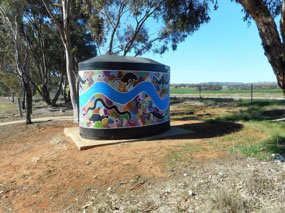
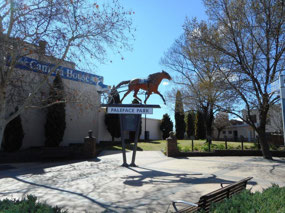
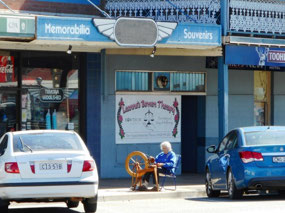
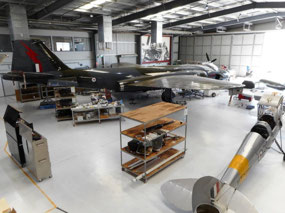
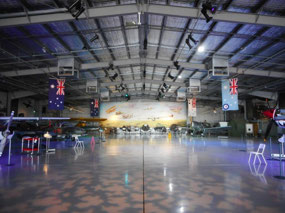
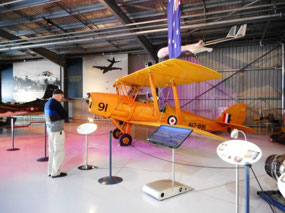
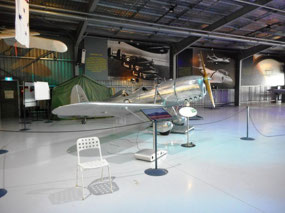
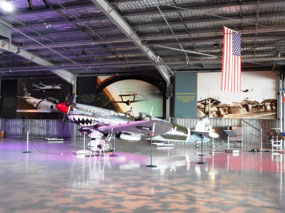

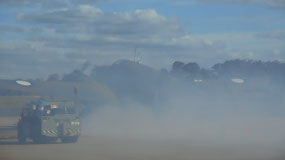
Marion
2019-08-28
Love the colour of the sky!
Jill
2019-08-29
I see you are making some new friends!